Patagonia Ascensionist Jacket

The Patagonia Ascensionist Jacket is a workhorse! A shell designed for alpine conditions, I used it skiing, fat biking, snowshoeing, and hiking. It's lightweight, so it won't weigh me or my pack down, but doesn't compromise on warmth. The jacket sheds snow and rain, and with features such as waterproof zippers, hip pocket draw cord adjustment, and two-way adjustment at the hood, it allows me to stay dry and retain body heat.
It's also quite breathable, with two-way pit zips for dumping excess heat. And it incorporates a RECCO detector, providing the security of knowing I'd be searchable to rescuers in the event of an emergency. The only feature I wish it had is an internal zipper pocket for keeping my phone dry and warm.
Pros
- Lightweight (11.4oz)
- Waterproof (GORE C-KNIT material)
- Breathable
- Adjustable hood, wrists, and hip
- Helmet compatible hood
- Integrated RECCO traceable detector
Cons
- I'd love to see an internal zipper pocket for phone storage
I tested the women’s Patagonia Ascensionist hard shell as a member of the Trailspace Review Corps from November 2019 through November 2020. I wore the Ascensionist hiking, snowshoeing, fat-tire mountain biking, backcountry alpine ski touring, backcountry nordic skiing, and alpine skiing in and around New Hampshire’s White Mountains. Oh, and I also brought it with me on a trip to Quebec City, Canada, back when that was still allowed (pre-COVID). Temperatures during this time ranged from 40 to -30 degrees Fahrenheit.

Fit & Comfort:
I’m 5'4" with a short, fairly narrow torso (35" hip, 27" waist, 33" chest, 15.5" torso length) and the size small fits me perfectly. It's a regular fit. Available sizes are women's extra extra small through extra large and men's extra small through extra extra large. My measurements technically align with an extra small according to Patagonia's size chart, but because I plan on layering with any hard shell, I've always gone with a size small and that rings true here.
I have enough space for layering, yet the jacket is fitted enough to prevent gapping. The arms are long enough for me to extend my arms fully (when poling, etc.) without risk of exposing my wrists to the elements. The Ascensionist is fitted at the hip, which is helpful in terms of keeping wind and snow out. However, if you prefer a boxy fit, this is likely not the hard shell for you.
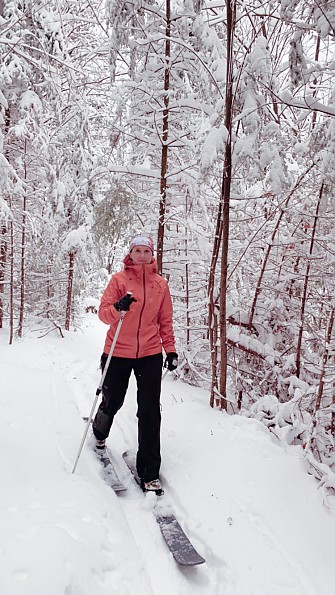
The unique three-layer GORE-TEX active shell is composed of a 2.5-ounce 30-denier 100% recycled nylon treated with a DWR coating. The result is a durable, lightweight, waterproof shell. It weighs just 11.4 ounces, setting itself apart as the most lightweight of Patagonia's hard shell jackets.
Here are some others, for comparison's sake:
- Patagonia Torrentshell (3-layer H2No): 12.5 oz women's / 13.9 oz men's
- Patagonia Pluma (3-layer Gore-Tex Pro): 12.9 oz women's /14.6 oz men's
- Patagonia Calcite (2.5-layer Gore-Tex Paclite): 13.1 oz women's / 14.5 oz men's
- Patagonia Galvanized (3-layer H2No): 15.5 oz women's / 18.6 oz men's
- Patagonia Triolet (3-layer Gore-Tex): 17.2 oz women's / 19.4 oz men's
- Patagonia Stretch Nano Storm (2.5-layer nylon with 60g FullRange insulation): 18.2 oz women's / 20.3 oz men's
I previously reviewed the Skyward Jacket by Outdoor Research, which weighs nearly double, at 22.3 ounces. I'm a fan of being able to move fast with lightweight gear, so the Ascensionist is right up my alley.
The inner layer of the Ascensionist is soft against bare skin, allowing me to wear minimal layers on warm but wet conditions without risk of chafing. I’ve experienced no restriction in movement and have consistently felt comfortable wearing the Ascensionist, whether I’m skiing, snowshoeing, hiking, or just running errands around town. I can move my arms up, down, and sideways while the body of the jacket remains in place, which is helpful while poling.



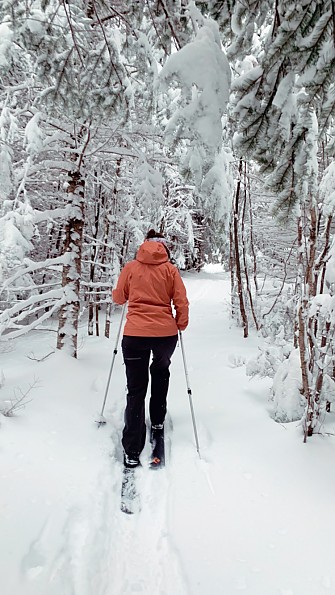
Adjustability:
The cuffs of the jacket incorporate Velcro straps for easy manual adjustment.
Elastic cord is incorporated into the hem at the hip and can be cinched to prevent snow, rain, or cold air from seeping in.
The hood is helmet-compatible (for skiing and climbing) and can be easily adjusted with elastic drawcords on either side of the hood and at the back to prevent gapping. The hood is laminated at the brim to improve visibility (no brim flopping into your field of vision) and provide an extra layer of protection against the elements.
For adjusting cords at the hip and the hood, Patagonia has incorporated the Cohaesive embedded cord-lock system. Essentially I tug at the plastic knob at the end of a cord to cinch, and press a button to release. The access point to cinch the hip opening is accessed by reaching inside the hip pockets and pulling the drawcord there. I absolutely love this feature—it's super easy and doesn't require me to unzip my jacket or try to reach my gloved hands under the jacket to try and find a drawcord. Genius!
I was a bit skeptical of the release system, as the cord is sewn into the jacket, so there's no easy way to manually release tension if the button release fails. However, I've found that as long as there's pressure on the cord, it loosens when I press the release button.

One quirk I've noticed is that one of the cords used to adjust the hood is significantly too long, so it sticks out unless I pull the extra cord back into the jacket (see photo). This is not a problem in terms of functionality, and I imagine is a defect specific to my individual jacket from last year (as pre-production gear sent out for testing sometimes has minor defects like this).
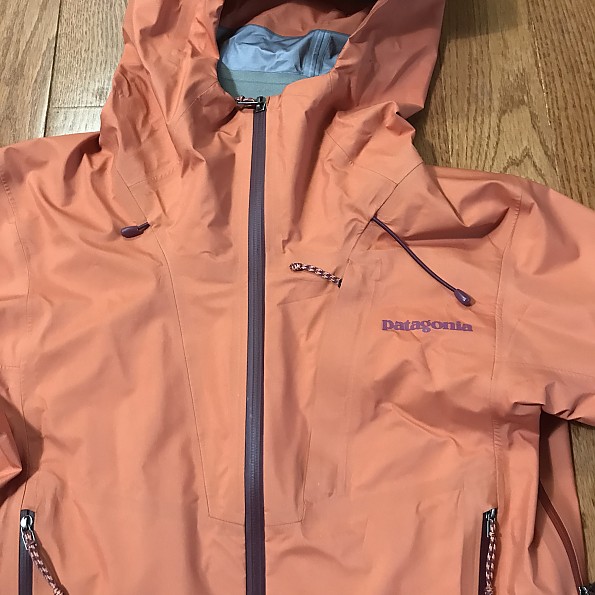
Water Resistance:
What can I say, GORE-TEX technology is masterful when it comes to waterproofing. The Ascensionist sheds snow and rain, keeping me warm and dry during my backcountry and frontcountry excursions.
The main zipper, waist pocket zippers, and pit zips are waterproof. The chest pocket is DWR-treated and hidden away behind a layer of material for extra protection.
Breathability:
Breathability is a key factor in New England winter conditions. I need a hardshell layer that will keep the snow and wind out while offering the ventilation necessary to prevent moisture from building up inside. In my opinion, there’s nothing worse than arriving at the summit of a hike or ski tour with baselayers that are damp with sweat—a recipe for a cold transition and descent that can ruin an otherwise spectacular outdoor adventure.

The Ascensionist offers excellent ventilation through two way pit zips, allowing me to dump heat as needed. The two-way zipper is a great feature, as it allows me to zip and unzip from the top or bottom of the pit zip. It's not an absolute necessity for me, but being able to adjust the zippers is helpful. For example, if the straps of my pack would cover the lower portion of the pit zip, I can reposition the zipper so as not to be blocked by my pack.

Warmth:
Let's be clear, the insulating capacity of any non-insulated hard shell is a function of its wind and water resistance. Essentially, how well does it trap my body heat in, and keep the wind, snow and rain out? As previously mentioned, the Ascensionist is completely waterproof. The two-way adjustability around the hood, drawcords at the hip, and velcro wrist straps allow me to cinch all openings around my body, preventing wind from blowing in. This jacket is fantastic when it comes to protection from wind and snow.

Layering:
I often wear the Ascensionist over a merino or moisture-wicking tank top, a long-sleeve baselayer (thickness depends on temperature), and a thin puffy vest or jacket. This was my go-to layering system for pretty much any backcountry activity—alpine or nordic skiing, mountain biking, hiking, or snowshoeing. The arm vents are features I frequently use once I get moving and my body temperature begins to heat up.

Abrasion:
I haven’t noticed any issues with abrasion. The inner material is fairly soft against the skin as far as hard shell jackets go, and the drawcords are housed internally which helps to prevent chaffing.
Function:
Pockets: There are two hip pockets and one chest pocket.


There's also a large internal storage pouch for large items such as gloves.
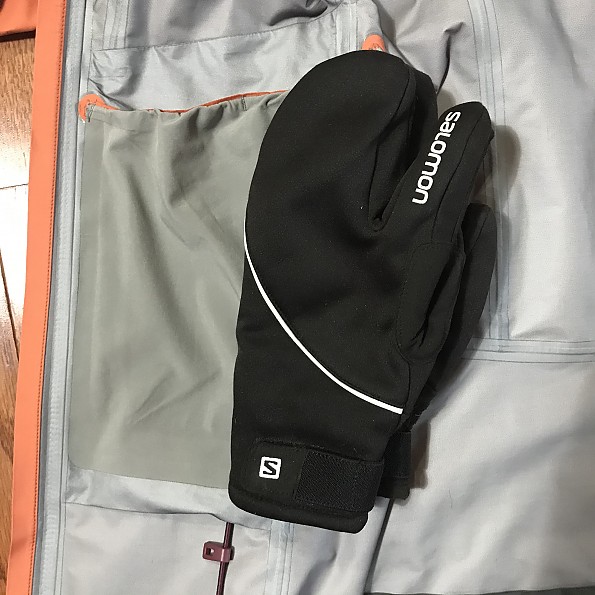
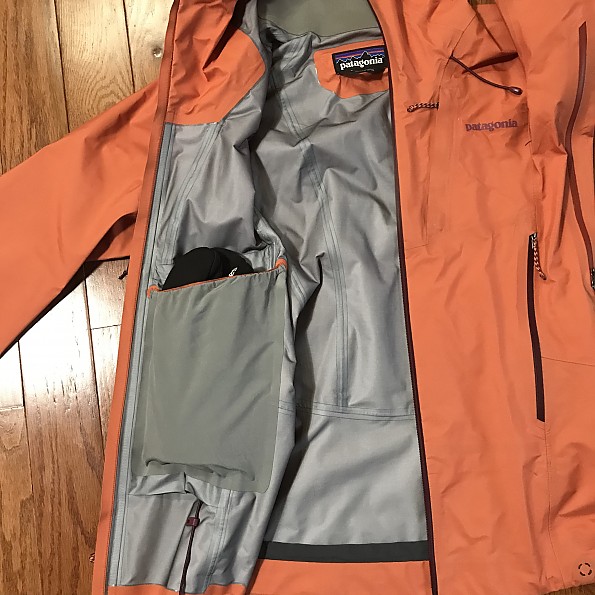
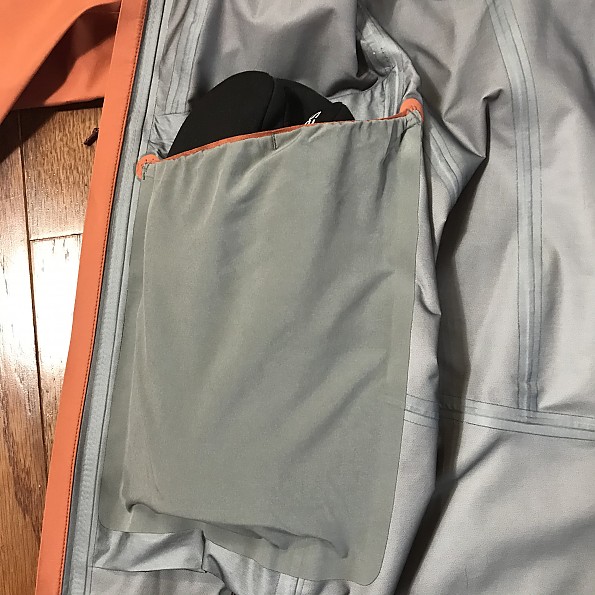
I do wish there were an interior pocket with a zipper closure as I hate storing my phone in external pockets—and let's face it, we're all bringing our phones with us at this point. I tend to store things in my hip pockets that I need to access regularly. So I'm constantly zipping and unzipping hip pockets.
Also, because the access point to the drawcords is located in the hip pocket, I try to avoid storing anything in those pockets that could be damaged if dropped in the snow. The chest pocket is large enough for storing a phone (at least it easily fits my iPhone 7), so that's a good option. I just like to have the choice of using an interior pocket so I can keep my phone warm and separated from other items.
Ease of Use:
I fine the features of the Ascensionist jacket easy to use. Zippers zip and unzip without catching. Elastic cord and velcro cinch efficiently and stay in place. Pockets and vents are easy to access.
Features:
In addition to the features already described, the Ascensionist incorporates RECCO technology, which makes me searchable to rescuers using radar technology. The RECCO detector is located behind the tag at the back of the neck. So, while the detector is thicker than the rest of the jacket (it feels like a stiff pad embedded in the jacket), it's placed in a location that isn't likely to be bothersome. If it were somewhere that was likely to be rubbed by a pack, for example, it might be more noticeable.

Another feature worth mentioning is that the fabric is bluesign approved, a mark of responsible and sustainable manufacturing practices. It's also Fair Trade Certified sewn. I appreciate Patagonia's commitment to sustainability, offering features such as the option to trade in used products or have them repaired rather than throwing them away.
Construction & Durability:
The Ascensionist certainly seems well constructed and durable. The zippers, GORE C-KNIT material, drawcords, etc. have stood up to some heavy wear over the past year across a variety of outdoor activities and have consistently performed well.
Overall Impressions:
The Ascensionist is a lightweight, comfortable, reliable hard shell. I feel protected from snow and moisture while able to dump heat through underarm vents. Whether fat tire biking, skiing, hiking, or snowshoeing, the Ascensionist allows for unrestricted movement without gaping. Living in New England where winter temperatures are generally below freezing, it’s the perfect hard shell for me to incorporate into my winter layering system.
Thanks to the folks at Patagonia and Trailspace for the opportunity to test out the Ascensionist!

Background
I used the Ascensionist Jacket most weekends over a full winter season in New England. My most frequent excursions in it were backcountry Nordic skiing adventures in and around the White Mountains, but I also used it backcountry alpine skiing, resort alpine skiing, hiking, snowshoeing, and fat biking. I've been alpine adventuring in New England for more than 20 years and find hard shell jackets to be a staple of any winter excursion.
Source: received for testing via the Trailspace Review Corps
(Sample for testing and review provided by Patagonia)
Your Review
Where to Buy
You May Like
Specs
| Men's | |
|---|---|
| Price |
Historic Range: $177.99-$499.00 |
| Weight |
371 g / 13.1 oz |
| Fit |
Regular Fit |
| Activities |
Hiking, Climbing, Ski/Snowboarding |
| Materials |
3-layer, 2.5-oz 30-denier 100% recycled nylon plain-weave GORE-TEX Active shell with GORE C-KNIT Backer Technology and a DWR (durable water repellent) finish |
| Footprint |
Fabric is certified as bluesign approved / Fair Trade Certified sewn |
| Women's | |
|---|---|
| Price |
Historic Range: $224.55-$348.99 |
| Weight |
323 g / 11.4 oz |
| Fit |
Regular Fit |
| Activities |
Hiking, Climbing, Ski/Snowboarding |
| Materials |
3-layer, 2.5-oz 30-denier 100% recycled nylon plain-weave GORE-TEX Active shell with GORE C-KNIT Backer Technology and a DWR (durable water repellent) finish |
| Footprint |
Fabric is certified as bluesign approved / Fair Trade Certified sewn |


